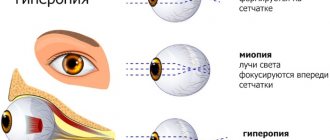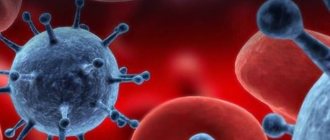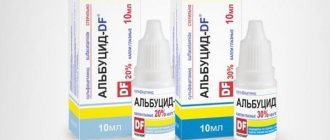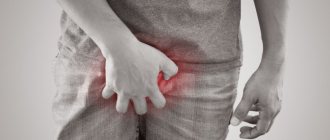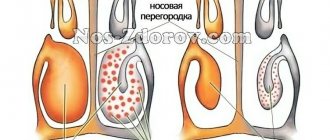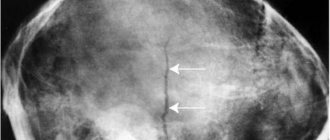Heart failure often manifests itself in the form of shortness of breath, a feeling of incomplete inspiration and lack of air. There may also be other symptoms. What to do in this case and how to help a sick person - read in this article! Most often, shortness of breath in heart failure is chronic in nature with a gradual increase in the clinical picture. Acute respiratory failure can occur with myocardial infarction, an attack of angina, or dilation of the pulmonary vein.
The main pathological factor in increased breathing is a slowdown in circulatory processes in the pulmonary circulation, which includes the pulmonary veins. Due to scarring or degenerative changes, the heart muscle loses its ability to pump the required volume of blood. There is a depletion of current in the pulmonary circulation. Congestion leads to the formation of plasma effusion through the vascular wall. Fluid can accumulate in the pleural cavity, reducing the vital capacity of the lungs. In severe cases, fluid can penetrate into the alveoli, thereby complicating gas exchange. With massive effusion, pulmonary edema can be caused.
Causes of cardiac dyspnea
A distinctive characteristic of this condition in middle-aged and young people is difficulty in inhaling. This can occur as a result of insufficient conductivity of the trachea, pleura, upper respiratory tract, bronchi, diaphragm, which is facilitated by:
- purulent inflammation of tissues;
- the presence of a foreign body in the respiratory passages;
- bronchodilator spasms;
- swelling of the mucous membranes;
- painful neoplasm.
This type of shortness of breath can occur due to physiological factors, for example: in a pregnant woman, after overeating, after heavy physical activity (long running, jumping or squats).
Important! Most often, shortness of breath occurs in people, including young people, if they are overweight, during physical activity, or with curvature of the spine or deformation of the sternum. Dysplae may occur as a result of exposure to high mountain areas.
Factors contributing to the appearance of cardiac dyspnea may be psychogenic causes:
- a sharp feeling of fear and anxiety;
- panic attack;
- neuroses;
- depressive state.
Causes
The fact that the main organ is in danger is indicated by shortness of breath of a corresponding nature. It develops due to failure of the left side of the heart. This is manifested by poor cardiac output or blood congestion in the lungs, the two conditions can be combined.
In the first case, brain nutrition is disrupted, in the second, gas exchange and pulmonary ventilation conditions are impaired. At the same time, the breathing pattern changes and orthopnea develops.
Shortness of breath is a common consequence of serious cardiac diseases - heart disease, failure, cardiosclerosis, disorders of the myocardium.
If there is heart failure, it can no longer bear the load, causing blood flow in the pulmonary vessels to become slower. This causes the lungs to lose their ability to provide enough oxygen to the blood.
Symptoms of pathology
A symptom of dyspnea is a violation of the frequency and depth of breathing during physical activity and in a calm state, when there is no reason for this.
There are two stages of air shortage:
- initial stage - manifestation of symptoms after physical exercise (load);
- the late stage, which progresses, is considered the complex version. In this case, the signs of dyspnea make themselves felt without tension, for example: when a person is lying down.
Symptoms of shortness of breath in diseases of the cardiovascular system
The occurrence of shortness of breath in a lying position is considered dangerous. There is a huge risk that the patient will suffocate from an attack in his sleep. After all, in a horizontal position, blood flow to the heart increases. And it coped poorly with the previous loads. As a result, blood stagnates in the vessels. Therefore, the patient is recommended to sleep in a sitting position, for example: in a chair. Only this way, with your legs down, does it become a little easier for the heart to perform its functions.
If, when climbing a flight of stairs, while walking, or while doing simple homework, you feel shortness of breath in your heart, this is an alarming signal that indicates the occurrence of heart failure.
In medical circles, there are several basic functional classes of dyspnea:
- Class I – signs of shortness of breath become apparent after significant physical exertion;
- Class II – breathing problems occur during moderate exertion;
- Class III – shortness of breath appears with minor physical activity, for example: doing housework;
- Class IV – dyspnea occurs without significant reasons, for example: at rest.
Breathing disorders due to heart disease
The most common type of breathing pathology is cardiac dyspnea. Lack of air is explained by disruption of the heart muscle in the following conditions:
- angina pectoris;
- heart defects (congenital and acquired);
- cardiomyopathy;
- inflammation – myocarditis, endocarditis;
- aortic aneurysm;
- complicated arterial hypertension.
It is extremely important to recognize the disease in time and create conditions to prevent acute situations that provoke severe tachypnea with the formation of impaired blood flow in the coronary arteries.
Tachypnea may occur due to heart failure
Classification of dyspnea
There are the following types of shortness of breath with their own unique factors of difficulty in inhalation and exhalation:
- Inspiratory dyspnea involves difficulty in inhaling. It manifests itself in heart failure and pathologies of the respiratory system, indicating their insufficient conductivity. This type of shortness of breath can be caused by:
- bronchodilator spasms;
- swelling of the respiratory tract mucosa;
- entry of foreign bodies;
- the appearance of pathology of secretion accumulation;
- abnormal development of organs;
- oncopathologies and tumors that lead to compression of the respiratory tract;
- abscesses.
- Expiratory shortness of breath indicates obstructed passage of small bronchi, which causes bronchodilator spasm. This is caused by abnormal narrowing of the bronchioles, accumulation of secretions in them and swelling of the mucous cavity. This type of cardiac dyspnea accompanies bronchial asthma or bronchiolitis.
- Mixed dyspnea, which is considered a hallmark of parenchymal acute respiratory failure.
To remove the symptoms of cardiac dyspnea, it is necessary to provide a course of drug therapy aimed at eliminating or reducing the harmful effects of the underlying disease. After all, dyspnea is only a concomitant symptom, and not a separate pathology.
Shortness of breath - what are the causes?
The basis of tachypnea is oxygen deficiency: an acute lack of life-giving gas forces the body to inhale air again and again. The main causes of shortness of breath are:
- Cardiac pathology (acute and chronic diseases);
- Pulmonary diseases;
- Acute conditions (trauma, bleeding, coma);
- General diseases;
- Psychiatric problems.
In each specific case, it is necessary to find out the cause as quickly as possible in order to prevent an unfavorable outcome for the person.
How to treat shortness of breath of the heart and how to do it correctly?
If you feel a lack of oxygen in the form of dyspnea and want to relieve the symptoms, then you should not run headlong to the nearest pharmacy kiosk for medications that saved your friend from cardiac dyspnea. To begin with, it is recommended:
- if you smoke, then quit the habit;
- if you are overweight, then normalize your diet and lose weight;
- If there is a constant jump in blood pressure, take measures that relieve such symptoms.
Some types of shortness of breath cannot be eliminated even if therapy is performed to eliminate the underlying cause of the disease. The frequency of shallow breathing during ARVI will decrease with normalization of body temperature, but complications in the form of bronchitis may occur. And it contributes to respiratory dysfunction and requires an additional course of treatment.
They relieve shortness of breath during respiratory failure with medications that dilate the bronchi, promote expectoration and reduce the level of stress on the heart:
- adrenomimetics;
- m-anticholinergics;
- long-acting methylxanthines;
- inhaled glucocorticoids;
- drugs to thin sputum;
- peripheral vasodilators;
- diuretics;
- antispasmodic drugs.
Medicines: tablets, capsules and injections for the treatment of cardiac dyspnea
In addition to drug therapy, the lack of oxygen in the form of shortness of breath can be eliminated with oxygen therapy with humidified oxygen, physiotherapy or therapeutic breathing exercises.
Strelnikova’s set of exercises can be used as therapeutic breathing exercises. You can watch it on video:
Principles of treatment of shortness of breath in heart failure
Cardiac dyspnea is one of the most obvious symptoms of heart failure. Getting rid of it or reducing it is possible only by treating the underlying disease. Because of this, the main recommendations are aimed at improving heart function.
The first thing that should be emphasized when treating cardiac shortness of breath is the presence of excess weight. If there is such a problem, then you should definitely try to solve it by losing weight. After all, it is known that excess weight is a direct path to complications of cardiovascular diseases. A person who is overweight finds it much more difficult to move. The treatment system also includes smoking cessation.
To get rid of shortness of breath, you can use breathing exercises. For example, the majority recommends familiarizing yourself with and applying the Strelnikova complex. The exercises are not very difficult, and they can also be repeated directly by the trainer.
For cardiac shortness of breath, light physical exercise is recommended. But it is worth paying attention that any physical exercise should be discussed with a doctor, and you should also make sure that there is no overwork. Moderation is the main principle that must be observed when exercising if you have cardiac shortness of breath. To normalize the functioning of the heart and smooth out the symptoms of shortness of breath, you can resort to the following medications:
- Beta blockers;
- ACE inhibitors;
- Glycosides;
- Diuretic.
Glycosides have cardiotonic and antiarrhythmic effects. These drugs include Digoxin. Most doctors attribute and recommend it, it is very popular and proven.
With prolonged use of glycosides, they can cause an overdose due to the fact that they accumulate in the body. Therefore, if symptoms such as loss of appetite, slow pulse and nausea appear, it is necessary to consult a doctor and adjust the drug dosage regimen.
ACE inhibitors perform the function of relaxation, thus dilating the arteries and promoting the resumption of vascular function.
This type of drug includes:
- Enalapril;
- Cilazapril;
- Fosinopril;
- Lisinopril;
- Captopril.
ACE inhibitors cause low blood pressure, which may result in dizziness. Because of this, after taking these medications , it is best to lie down in bed. There is no need to suddenly get out of bed in the morning; you need to let your body gradually get used to changes in its position.
Diuretics (diuretics) help remove excess fluid from the body. This greatly facilitates the general condition of the patient. After all, the effect of these drugs facilitates the work of the heart due to the fact that it then has to pump much less fluid throughout the body.
Among these medications:
- Furosemide;
- Amiloride;
- Indapamide;
- Chlorthalidone;
- Bumetanide.
Diuretics are recommended to be taken in the morning to prevent disruption of nighttime sleep patterns by frequent urination.
In addition to their main effect, diuretics help reduce swelling and weight loss.
Treatment with folk remedies
Shortness of breath can be treated using various methods; folk remedies can also help. After all, difficulties with breathing can be observed in a person for many years, constantly disturbing and preventing a person from living normally.
Important! Medicinal herbs, on the basis of which decoctions are made, have the same effect as tablets produced synthetically. But traditional medicine suggests that herbs, when used correctly, do not have a harmful effect and do not have any special side effects.
Emphasis is placed on the indication for the use of a particular herb as a medicinal potion, since the patient may have an individual intolerance even to such a harmless thing. If you have rapid breathing, do not use herbs that increase your heart rate.
Traditional medicine for cardiac dyspnea
But before you start making traditional medicine yourself, it is recommended to consult with your doctor.
Some useful and effective herbs that will help get rid of cardiac shortness of breath include:
- liquorice root;
- mint;
- yarrow;
- aloe leaves;
- cranberry grass;
- motherwort.
Each individual herb requires specific preparation. Some of them are infused with alcohol, others are brewed as tea. You need to be careful here.
Important! The saddest thing that happens in this case is that medicinal infusions give results at the initial stage. And in case of complications, these methods do not work. Therefore, you shouldn’t count on them too much.
People's Councils
Treatment of cardiac dyspnea with folk remedies is very common among patients, since breathing problems last for years, cause a lot of trouble, are painful and significantly reduce a person’s quality of life. Help with shortness of breath is provided by medicines growing in forests, vegetable gardens and meadows. The principle of action of medicinal herbs is similar to the effect of synthetic drugs (bronchodilators and expectorants), however, as is known, they are mostly harmless and do not have as many side effects. In addition, many pharmaceutical preparations are based on the healing properties of plants. So why not try to make a medicine at home that, at least temporarily (at first!) will help get rid of shortness of breath, so obsessive and unpleasant?
- The roots of cyanosis, licorice, lovage, peppermint and yarrow herbs, and bean pods are great for making medicine yourself.
- A little-known recipe of aloe leaves (you can take them on the windowsill) infused with vodka for 10 days relieves any cough and shortness of breath. To do this, a teaspoon of the infusion taken is flavored with a tablespoon of honey, a pause of 10 minutes is maintained and washed down with a glass of hot tea.
It is better to ask your doctor about the use of garlic with honey and lemon for the treatment of cardiac shortness of breath, but if he gives his go-ahead, you can try the following recipes:
- Make a paste of 10 squeezed lemons (use the juice) and 10 heads of garlic, add this mixture to a liter jar of honey, close and forget for a week. Take 4 teaspoons, savoring and swallowing slowly. They say that in 2 months you can achieve good results.
- What if you take the juice of 24 lemons, add garlic pulp (350 g), leave for a day and drink a teaspoon, having first dissolved it in ½ glass of water? People who have tried the medicine on themselves claim that after 2 weeks you can run and dance, feeling a second youth.
Sadly, folk remedies for cardiac shortness of breath will help for the time being, so you should not rely on them completely. The cause of shortness of breath still remains, the disease progresses and it will still have to be treated. And in such a matter it will not be possible to do without the help of a doctor.
What to do if you experience severe dyspnea?
If a person is severely short of oxygen and feels a severe attack of shortness of breath, it is recommended to quickly begin first aid.
If the incident occurred in a confined space, open windows or doors to provide access to fresh air. Unbutton the victim's collar buttons, neck cuffs, or blouse waistband to relieve pressure on the sternum. Provide the patient with complete calm, reassure him if he is worried, and give him until emergency help arrives.
Important! The patient should take a sitting or semi-sitting position with his legs down.
It’s great if it is possible to provide the victim with an oxygen cushion. If you have a first aid kit handy, place glycerol trinitrate under your tongue.
If no one is nearby during an attack of cardiac shortness of breath, you can help yourself. Apply light pressure with your finger into the jugular fossa. This is the location of the biologically active point. This procedure should be carried out for two to three minutes: pressing for three seconds and resting for the same amount.
Possible complications
In chronic heart failure, complications of cardiac dyspnea most often include:
- secondary forms of pneumonia;
- pneumosclerosis;
- pleurisy;
- decrease in vital volume of the lungs;
- oxygen deficiency of brain cells.
In acute heart failure, shortness of breath can lead to death due to the rapid development of edema of the pulmonary tissue. The cavity of the lungs rapidly fills with fluid, breathing becomes impossible. A distinctive sign is the appearance of foam from the patient’s mouth when breathing. It may be pink due to massive rupture of small capillaries. In addition, the following symptoms are noted:
- blueness of the skin;
- anxiety of a sick person;
- frequent shallow breathing;
- wheezing sounds;
- fear of imminent death;
- increased heart rate to 140 - 150 beats per minute.
This condition is life-threatening and requires intensive care. An ambulance must be called immediately.
Summary
- Medical statistics are disappointing. Only half of patients diagnosed with heart failure live longer than five years. It all depends on at what stage of the disease the patient consulted a cardiologist.
- Unfortunately, many miss the most favorable moment due to the fact that the first symptoms of heart failure are quite vague. One of the early manifestations - difficulty breathing - is often attributed to smoking or fatigue. Meanwhile, when the pathology does not lead to morphological changes, the condition of patients can be almost completely compensated by modern pharmaceuticals.
- How to treat shortness of breath due to heart failure should be decided exclusively by a qualified cardiologist. His instructions must be followed strictly throughout your life.
- You also need to: eat a balanced diet, spend more time walking in nature, give up alcoholic beverages and smoking. These simple preventive measures will help keep your heart healthy for many years.
Shortness of breath in other diseases and conditions
Less dangerous is shortness of breath associated with general illnesses or psychiatric disorders. Breathing problems may occur due to the following conditions:
- severe anemia (a small amount of hemoglobin is not able to provide tissues and organs with oxygen);
- high temperature with any acute inflammation;
- hysteria or neurosis (during a hysterical attack, the respiratory rate can reach 60-70 per minute).
Sudden shortness of breath is a symptom indicating an acute situation in the cardiovascular or respiratory system. It is important to react quickly - call for help and help the person wait for the doctor.
First aid for shortness of breath
- It is necessary to free a person from clothing that restricts movement.
- Open a door or window to bring in fresh air.
- A person should not be placed in a horizontal position; if there is shortness of breath, the person should sit, with the limbs standing on the floor.
- Immediately during an attack, the patient should take a diuretic tablet.
- To relieve an attack, it is recommended to place a nitroglycerin .
- You cannot move or stand up, this will cause respiratory depression.
During attacks of shortness of breath, do not move or stand up

